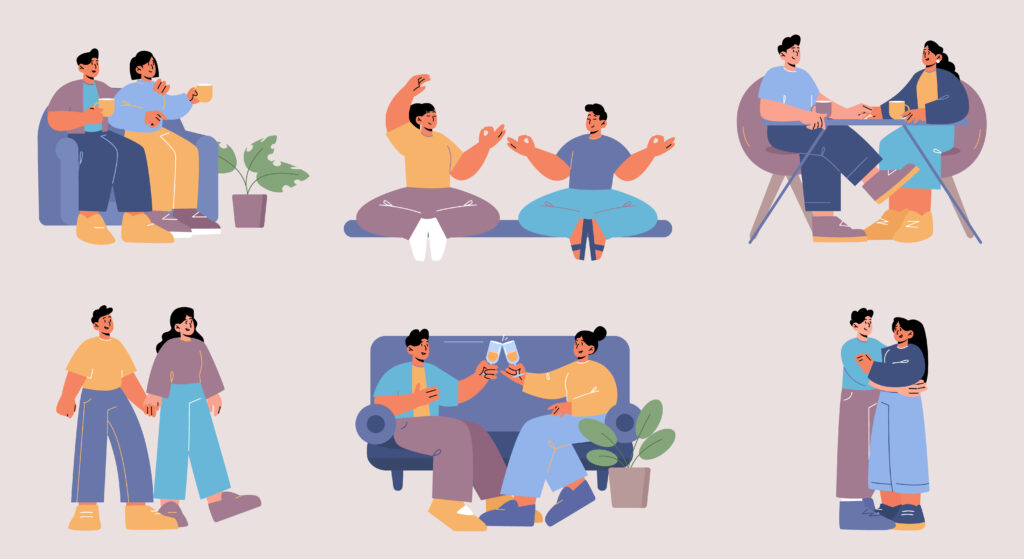Last updated on December 20th, 2024 at 01:26 pm
Vulnerability in relationships is a vital component of establishing and nurturing a strong, healthy, and intimate connection with a partner. However, being vulnerable can be challenging, particularly in romantic relationships. Despite these difficulties, many experts assert that embracing vulnerability can transform relationships, fostering closer connections and resulting in higher levels of trust, love, and intimacy.
In this article, we will examine the meaning of vulnerability in relationships, the advantages and challenges of being vulnerable, and strategies to cultivate the courage and trust needed to embrace vulnerability in a relationship.
What Is Vulnerability in Relationships?
Vulnerability in relationships refers to the willingness to share one’s deepest thoughts, feelings, and desires, even when those emotions are challenging or uncomfortable to express. It involves placing yourself in a position of perceived risk, opening up, and being honest with your partner, despite the fear of rejection, criticism, or embarrassment.
When individuals are vulnerable in relationships, they expose themselves to the possibility of being hurt. However, when approached correctly, vulnerability can also result in significant emotional and relational rewards.
The Benefits of Being Vulnerable in Relationships

There are numerous benefits to being vulnerable in a relationship. Perhaps the most significant of these is that it fosters greater intimacy and emotional connection between partners. When individuals feel safe enough to open up and share their deepest thoughts and feelings, they create a deeper and more meaningful bond.
Being vulnerable in relationships can also help build trust. When individuals share their vulnerabilities, they demonstrate a willingness to be honest and open, which can foster a sense of trust between partners.
Additionally, vulnerability can help reduce feelings of isolation and loneliness. When individuals feel they can be open and honest about their thoughts and emotions with someone they love, they are less likely to experience isolation or disconnection from the world around them.
The Challenges of Being Vulnerable in Relationships
While being vulnerable in a relationship offers many benefits, it is essential to recognize that there are also challenges associated with this level of openness. One of the primary challenges is the fear of rejection or criticism. Individuals may be reluctant to reveal their true selves due to the fear of being judged or criticized by their partner.
Another challenge is finding the right moment to be vulnerable. Timing is crucial when it comes to revealing one’s deepest thoughts and feelings. People may feel they are exposing themselves to the risk of being hurt if they share their vulnerabilities too soon or too late.
Finally, some individuals may find it challenging to embrace vulnerability, as they perceive it as exposing their weaknesses. However, it is essential to recognize that vulnerability is not a sign of weakness; instead, it is a demonstration of strength.
How to Embrace Vulnerability in Relationships
Embracing vulnerability in a relationship can be a challenging endeavor, yet it is a crucial component of establishing a strong and healthy bond with a partner. Here are some tips for embracing vulnerability in a relationship:
How do you demonstrate vulnerability in a relationship?

Demonstrating vulnerability in a relationship means being open and honest about your thoughts, feelings, and experiences, even when they are challenging or sensitive. This may involve sharing personal or emotional information, expressing your fears and insecurities, and seeking support or understanding from your partner. To exhibit vulnerability, it is essential to foster a safe and supportive environment, communicate effectively, and engage in active listening and empathy.
What does it mean to be vulnerable to someone?
Being vulnerable with someone means allowing yourself to be seen and known, encompassing both the positive and negative aspects of your personality. It involves being open and honest about your thoughts, feelings, and experiences, while exposing yourself to the risk of rejection or criticism. When you are vulnerable with someone, you place your trust in that person and permit them to see the real you.
What are examples of vulnerability?
Examples of vulnerability in a relationship include:
Conclusion
In conclusion, being vulnerable in a relationship can be both challenging and rewarding. It demands courage, trust, and patience, yet the advantages of deeper intimacy, increased trust, and diminished feelings of loneliness and isolation make it a worthwhile endeavor. By following these tips, you can cultivate the courage and trust needed to embrace vulnerability in your relationship, fostering a deeper and more meaningful connection with your partner.


